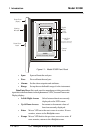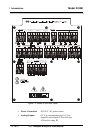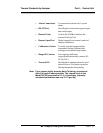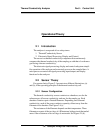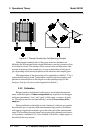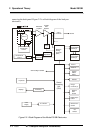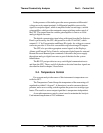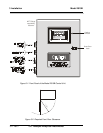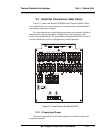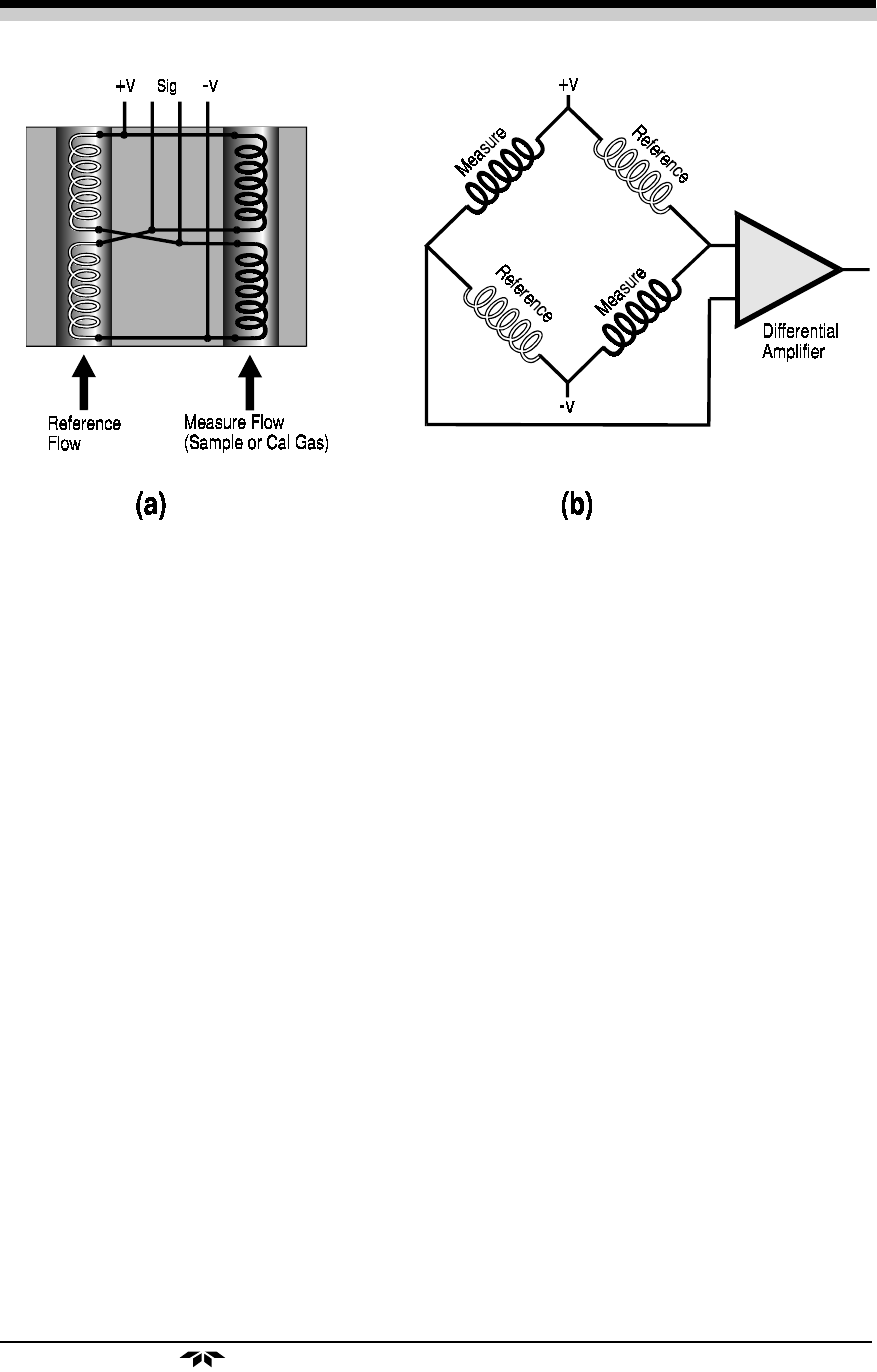
2-2 Part I
2 Operational Theory Model 2010B
Teledyne Analytical Instruments
Figure 2-1: Thermal Conductivity Cell Operating Principle
If the thermal conductivities of the gases in the two chambers are
different, the Wheatstone bridge circuit unbalances, causing a current to flow
in its detector circuit. The amount of this current can be an indication of the
amount of impurity in the sample gas, or even an indication of the type of
gas, depending on the known properties of the reference and sample gases.
The temperature of the measuring cell is regulated to within 0.1 °C by a
sophisticated control circuit. Temperature control is precise enough to com-
pensate for diurnal effects in the output over the operating ranges of the
analyzer. (See Specifications in the Appendix for details.)
2.2.2 Calibration
Because analysis by thermal conductivity is not an absolute measure-
ment, calibration gases of known composition are required to fix the upper
and lower parameters (“zero” and “span”) of the range, or ranges, of analy-
sis. These gases must be used periodically, to check the accuracy of the
analyzer.
During calibration, the bridge circuit is balanced, with zero gas against
the reference gas, at one end of the measurement range; and it is sensitized
with span gas against the reference gas at the other end of the measurement
range. The resulting electrical signals are processed by the analyzer electron-
ics to produce a standard 0-1V, or an isolated 4–20 mA dc, output signal, as
described in the next section.





